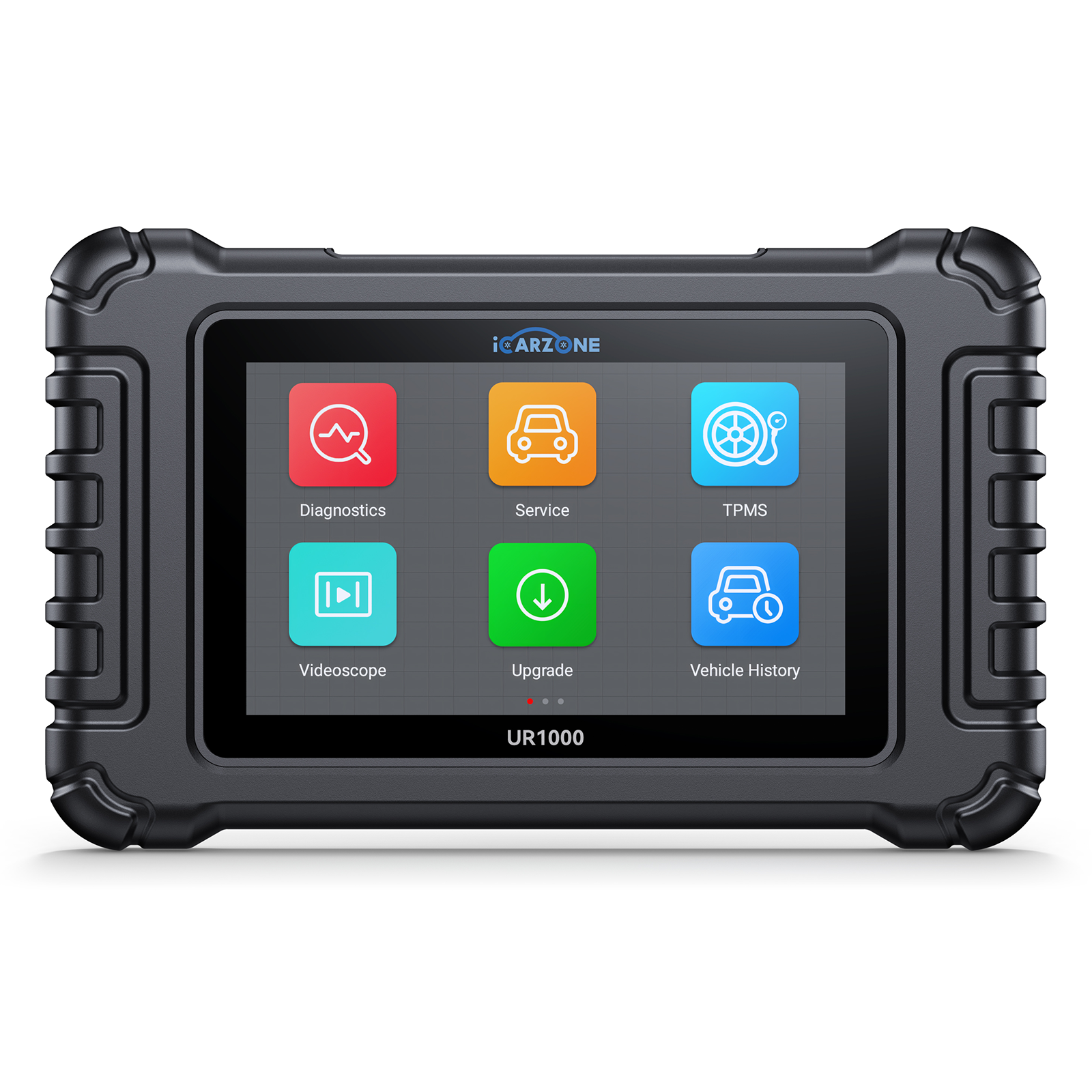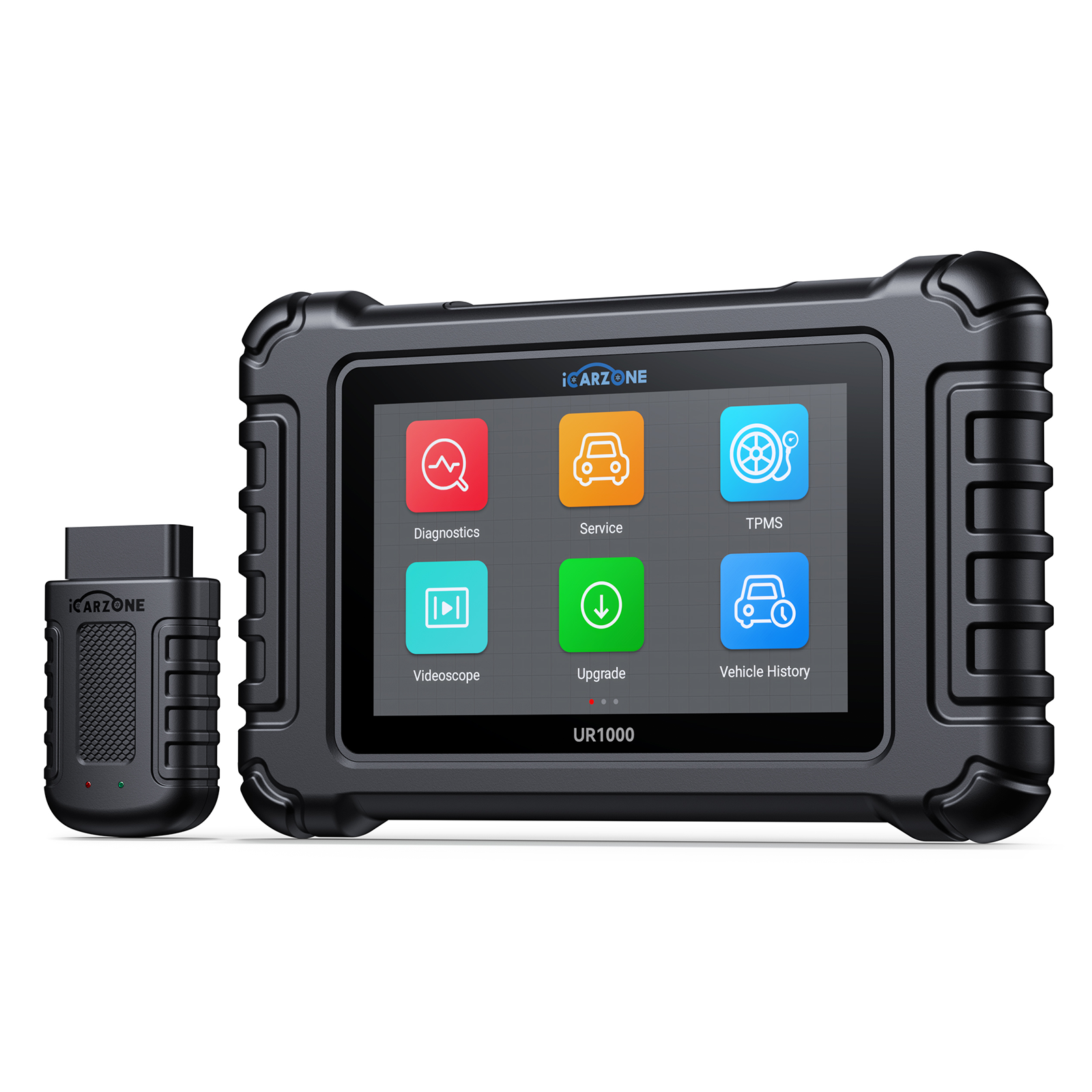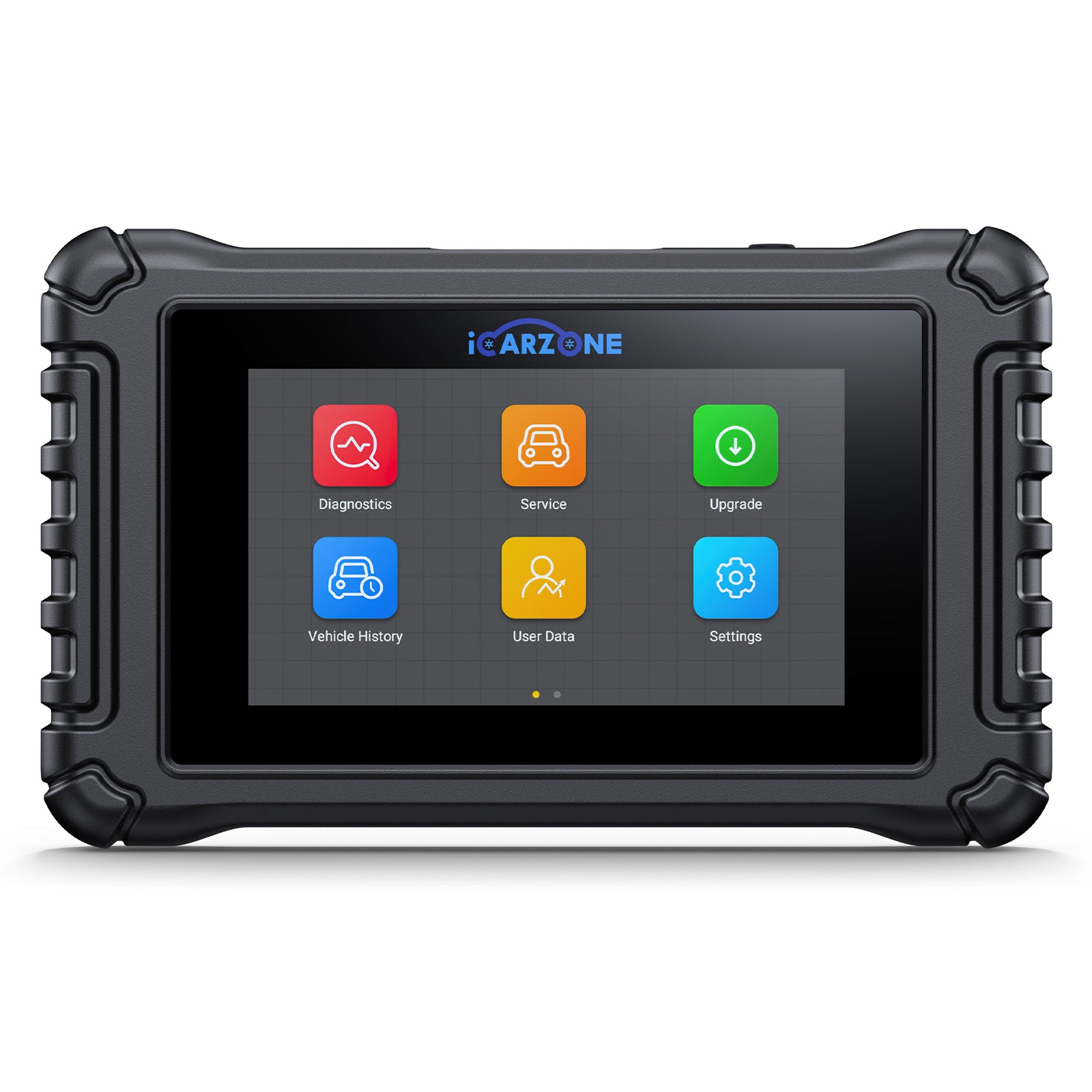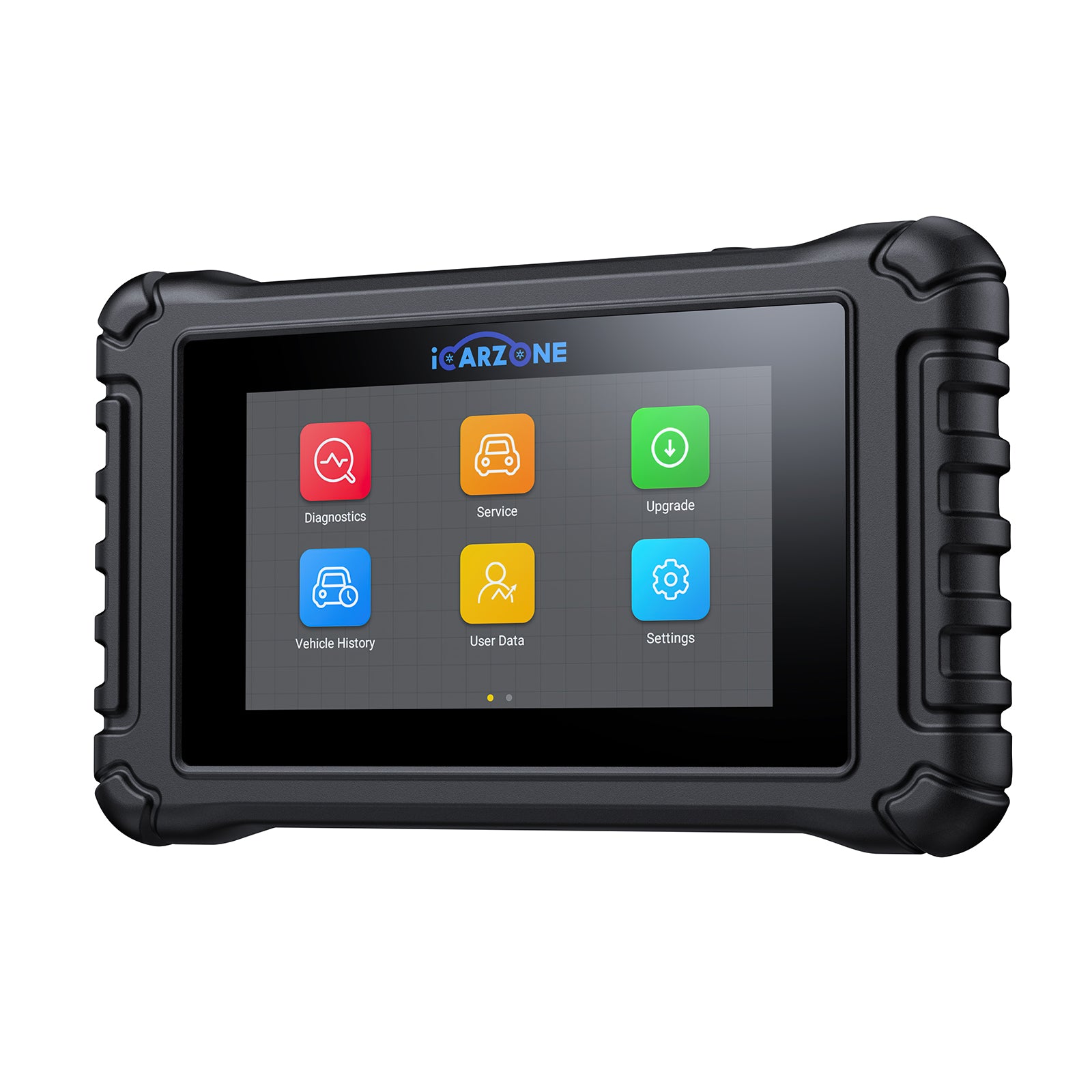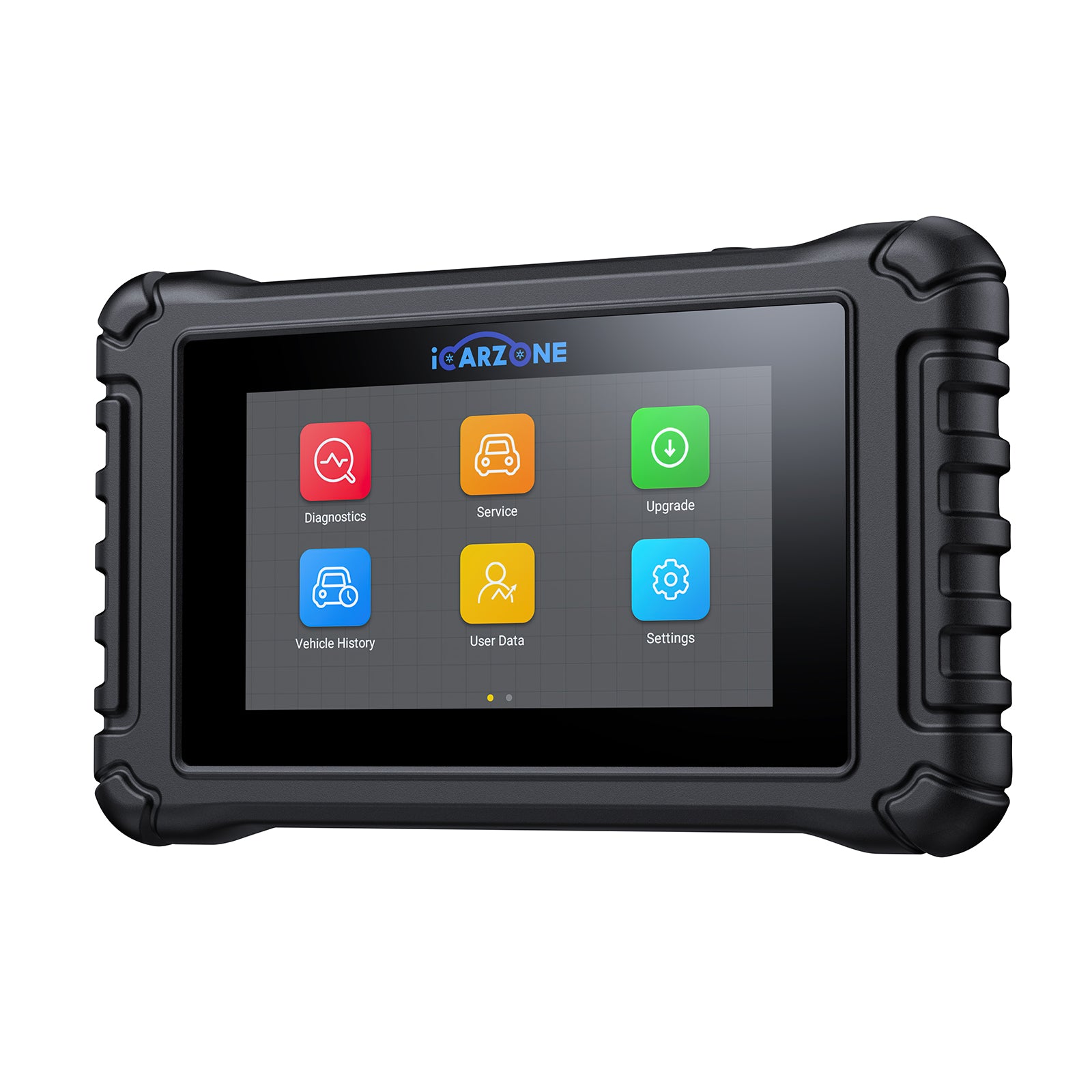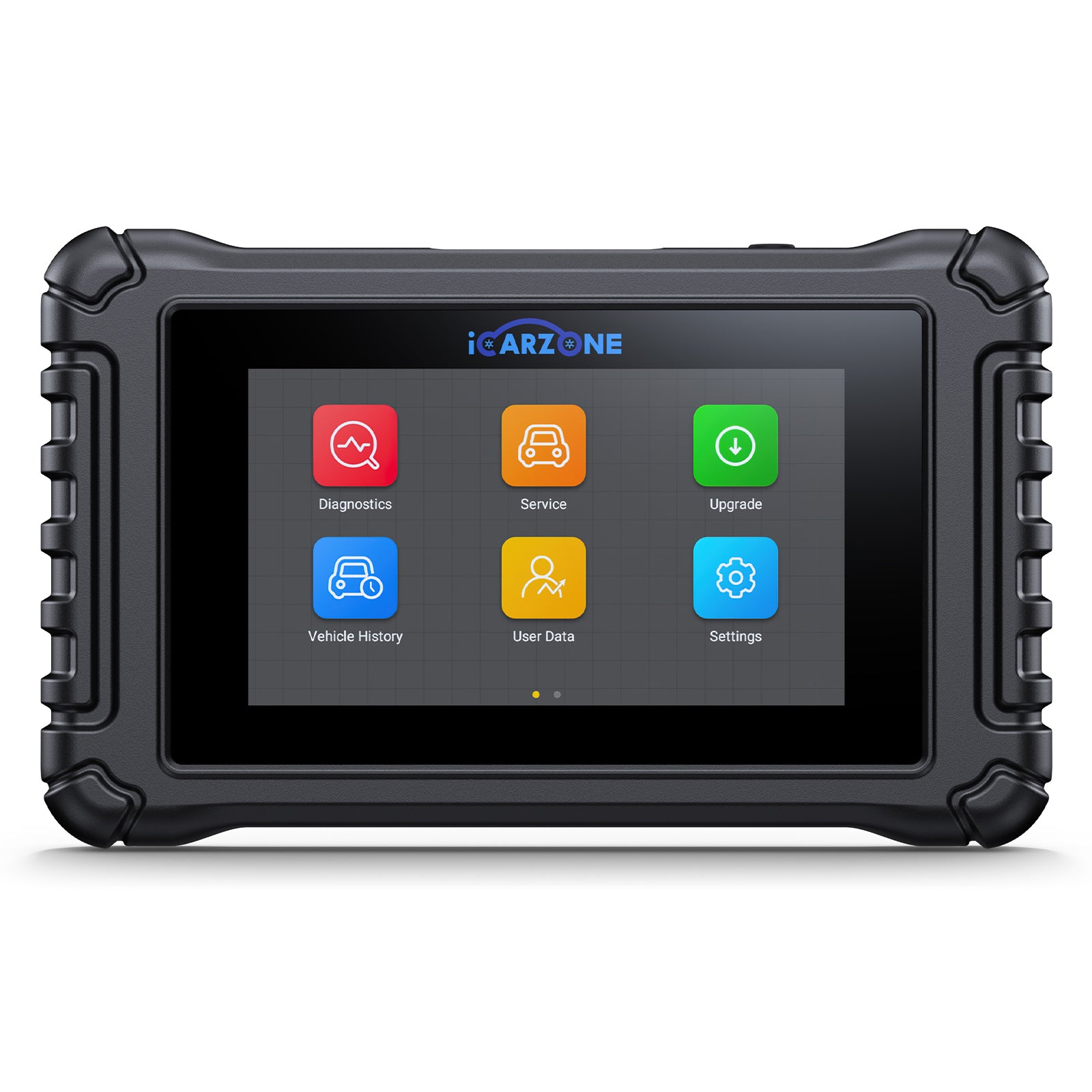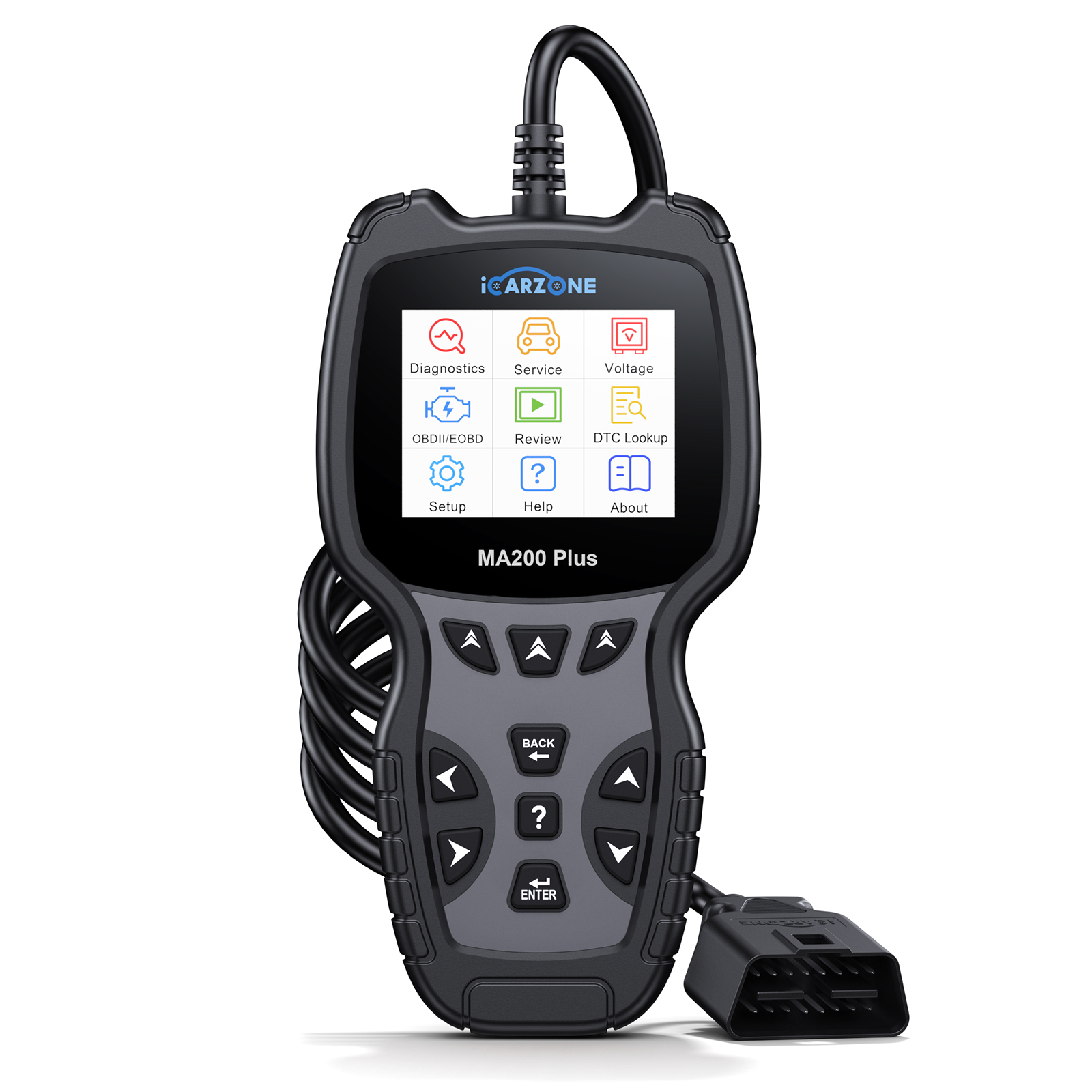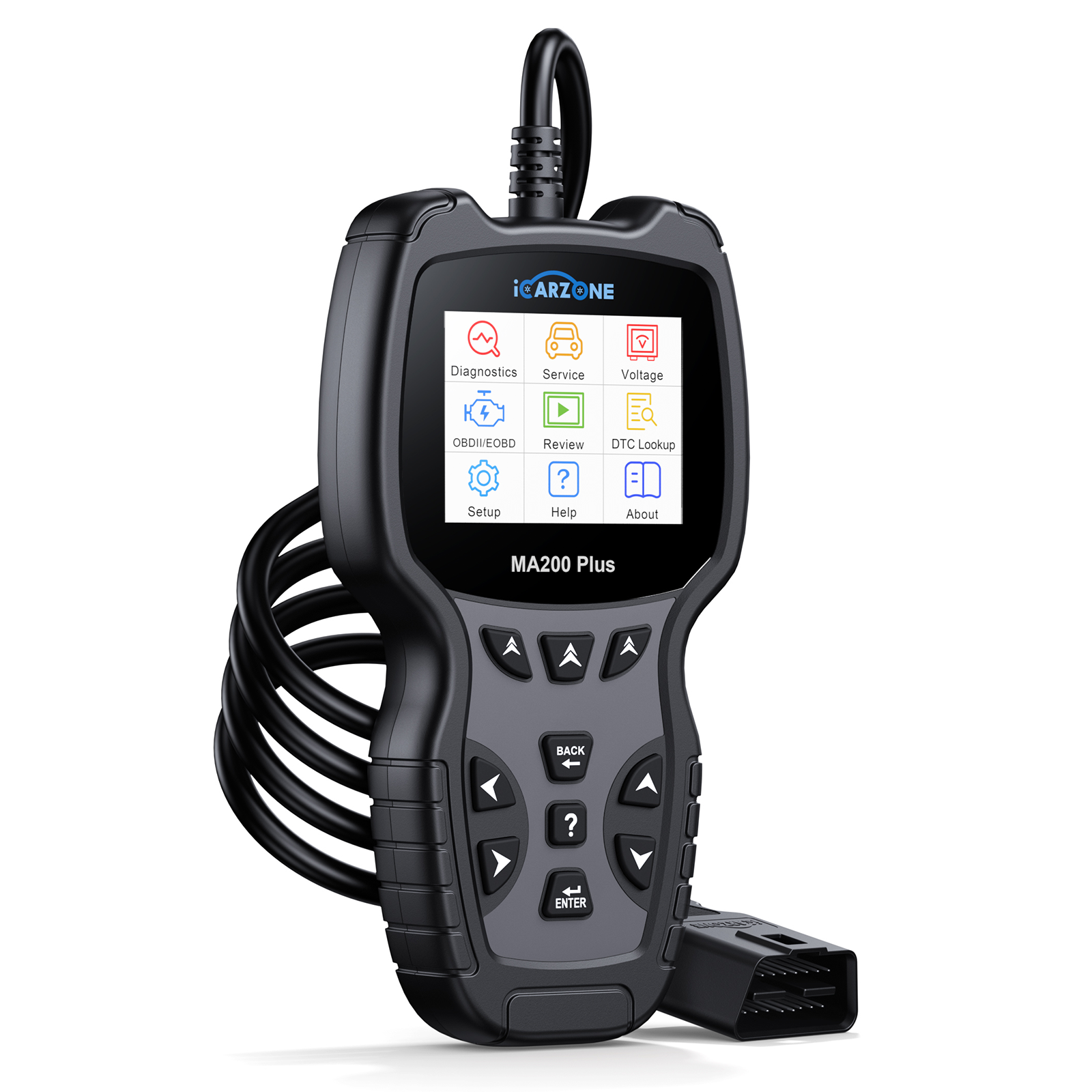P0606 Ford F-150 Fix: Internal Control Module Fault (2015-2024) | ICARZONE UR1000
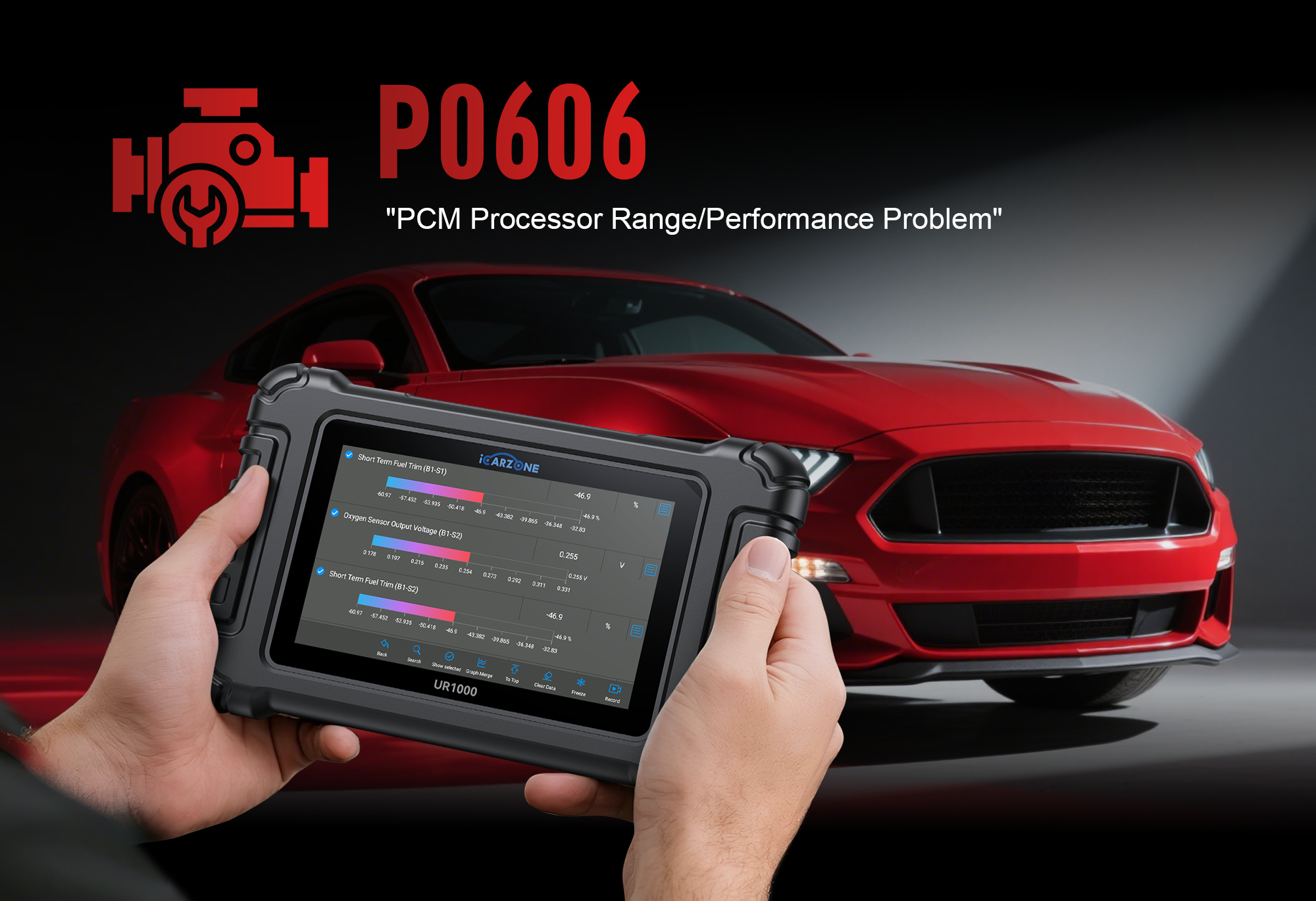
P0606: Internal Control Module Processor Fault in Ford F-150
Solve P0606 in 2015-2024 Ford F-150 (3.5L EcoBoost, 5.0L V8). Diagnose ECM/PCM issues with the ICARZONE UR1000 diagnostic tool.
Fix P0606 with UR1000 Now1. What is P0606 in Ford F-150?
P0606 is an OBD-II Diagnostic Trouble Code indicating an Internal Control Module Processor Fault. In the 2015-2024 Ford F-150—America’s best-selling pickup truck—this code targets the Engine Control Module (ECM) (also called PCM, Powertrain Control Module), the "brain" that manages critical engine and transmission functions.
The F-150’s ECM relies on a dedicated processor to execute software algorithms for fuel injection, ignition timing, transmission shifting, and emissions control. P0606 triggers when the ECM detects:
- Processor memory corruption (common in 3.5L EcoBoost F-150s with frequent towing)
- Failed self-diagnostic tests (known as "watchdog" monitors) during startup
- Voltage irregularities disrupting processor operation (seen in 5.0L V8 models with aging batteries)
- Software glitches in ECM calibration (prevalent in 2018-2020 F-150s with sync issues)

Why P0606 Matters for F-150 Owners
The F-150’s ECM is critical to its performance—especially in models with the 3.5L EcoBoost (twin-turbo) and 5.0L V8 engines, which depend on precise processor control for power delivery. Unaddressed P0606 can lead to:
- Reduced towing capacity (up to 3,000 lbs loss in 3.5L EcoBoost F-150s)
- Erratic transmission shifting (common in 10-speed automatic models)
- Fuel economy drops of 3-5 MPG (due to inefficient fuel injection timing)
- Disabled advanced features (e.g., Pro Trailer Backup Assist, EcoBoost turbo control)
- Complete ECM failure ($1,200+ replacement cost) if ignored
2. Common Causes in 2015-2024 Ford F-150
P0606 in the F-150 is tied to ECM software/hardware issues and electrical irregularities—here are verified causes with real-world owner case studies:
- ECM Software Corruption (2020 F-150 Lariat 3.5L EcoBoost) — Example: A 2020 Lariat owner with 60,000 miles developed P0606 after a failed over-the-air (OTA) update. UR1000’s ECM Health Scan showed corrupted fuel injection calibration. Reverting to the previous firmware (via UR1000’s "Backup Restore" feature) resolved the code without replacing hardware.
- Voltage Fluctuation (2017 F-150 XLT 5.0L V8) — Example: A 2017 XLT owner experienced intermittent P0606 and dim headlights. UR1000’s Live Data recorded battery voltage dropping to 9.2V during startup (normal: 12.4-12.7V). Replacing the aging OEM battery (Ford #BCI Group 65) and cleaning corroded terminals eliminated the fault.
- ECM Processor Failure (2018 F-150 Platinum 3.5L EcoBoost) — Example: A 2018 Platinum owner with 85,000 miles had persistent P0606 and transmission slipping. UR1000’s Processor Test failed the "watchdog monitor" check. Ford dealer diagnostics confirmed a fried processor—likely due to extended idling (common in fleet F-150s). Replacing the ECM with OEM part #HC3Z-12A650-A fixed the issue.
- Water Intrusion (2021 F-150 Tremor 3.5L EcoBoost) — Example: A 2021 Tremor owner reported P0606 after off-roading in heavy rain. UR1000’s Circuit Check showed moisture in the ECM connector (located behind the glove box). Drying the connector with compressed air and applying dielectric grease (Permatex #81150) resolved the temporary processor glitch.
- Aftermarket Tuning Issues (2016 F-150 FX4 5.0L V8) — Example: A 2016 FX4 owner with a custom tune developed P0606. UR1000’s Calibration Check detected mismatched software versions. Reverting to Ford’s factory calibration (via UR1000’s "Factory Reset" function) and updating to the latest TSB 21-2345 firmware fixed the problem.

3. Key Symptoms in Ford F-150 Models
P0606 symptoms in the F-150 vary by engine and model year but share core ECM-related issues—here’s how they typically manifest:
Performance Symptoms
- Illuminated Check Engine Light (CEL) with P0606 stored
- Reduced engine power (limp mode activation in severe cases)
- Erratic transmission shifting (10-speed auto models)
- Hard starting or extended cranking time
- Random stalling at idle (common in 3.5L EcoBoost)
Electrical & Feature Symptoms
- Non-functional infotainment or gauge cluster
- Disabled driver assists (Pro Trailer Backup, Lane Keep)
- Dim or flickering headlights/interior lights
- False warning messages (e.g., "Transmission Overheating")
- Failure to communicate with OBD-II scanners (severe cases)
4. F-150 Engines/Trims Prone to P0606
Ford service data and F-150 owner forums highlight these configurations with the highest P0606 incidence, based on ECM design and usage patterns:
| Engine | Model Years | F-150 Trims | % of P0606 Cases | Primary Risk Factor |
|---|---|---|---|---|
| 3.5L EcoBoost V6 | 2019–2022 | Lariat, Platinum, Tremor | 42% | HC3Z-12A650-A ECM firmware vulnerability (TSB 21-2345) |
| 5.0L Coyote V8 | 2015–2018 | XLT, FX4, Lariat | 28% | ECM voltage sensitivity to aging batteries |
| 3.5L EcoBoost V6 | 2015–2018 | King Ranch, Platinum | 15% | Processor overheating from extended idling (fleet use) |
| 2.7L EcoBoost V6 | 2020–2024 | XL, XLT, STX | 10% | OTA update-related software corruption |
| 3.3L Ti-VCT V6 | 2015–2024 | XL, XLT | 5% | Water intrusion in lower-trim ECM connectors (no weather sealing) |
Critical TSBs for F-150 P0606:
- Ford TSB 21-2345 (2019–2022 3.5L EcoBoost): ECM calibration update to fix firmware-induced P0606.
- Ford TSB 18-2157 (2015–2018 5.0L V8): Battery terminal cleaning procedure to resolve voltage-related P0606.
- Ford TSB 22-2103 (2020–2024 2.7L EcoBoost): OTA update rollback tool for software-corrupted ECMs.
5. Diagnostic Steps for F-150 with ICARZONE UR1000
Diagnosing P0606 in the F-150 requires ECM-specific testing—here’s how to use ICARZONE UR1000 for F-150-specific accuracy:
| Step | Action with UR1000 | F-150-Specific Goal | Pass/Fail Criteria |
|---|---|---|---|
| 1 | Full System Scan > Select "Ford" > "F-150" > "Engine Control Module" | Confirm P0606 and check for related codes (P0601-P0605, P0607-P0609) | Pass: Isolated P0606 | Fail: Multiple ECM codes (system-wide failure) |
| 2 | Live Data > "ECM Parameters" > Monitor battery voltage, processor load, and watchdog status | Verify stable voltage (12.4-12.7V) and active watchdog monitor | Pass: Voltage stable + watchdog "Active" | Fail: Voltage <12V or watchdog "Failed" |
| 3 | Advanced Diagnostics > "ECM Processor Test" > Run full self-diagnostic suite | Test memory, communication, and calibration integrity | Pass: All sub-tests "Passed" | Fail: Any sub-test "Failed" (indicates hardware/software issue) |
| 4 | Service Functions > "TSB Lookup" > Enter F-150 VIN | Check for applicable TSBs (21-2345, 18-2157, 22-2103) | Pass: No TSB match | Fail: TSB applies (follow firmware update/repair procedure) |
| 5 | Service Functions > "ECM Backup" > Save current calibration and fault history | Preserve data for potential firmware rollback or ECM replacement | Pass: Backup successful | Fail: Backup failed (indicates severe memory corruption) |
Case Example: A 2021 F-150 Tremor 3.5L EcoBoost failed Step 2 (voltage dropping to 11.8V) and Step 3 (watchdog "Failed"). UR1000’s TSB Lookup identified TSB 21-2345. After updating the ECM firmware (via UR1000’s "Firmware Update" feature) and replacing the battery, Step 2 and 3 passed. A 200-mile towing test confirmed no return of P0606.
Diagnose P0606 in F-150 with UR1000
6. Fixes for F-150's P0606
Resolving P0606 in the F-150 depends on whether the issue is software- or hardware-related—here’s how to address each root cause with ICARZONE UR1000:

1. ECM Firmware Update (Software-Related P0606)
- Connect UR1000 to F-150’s OBD-II port (under dashboard, driver’s side).
- Select "Service Functions" > "ECM Update" > "Check for Ford TSB Updates".
- If TSB 21-2345 (3.5L EcoBoost), 18-2157 (5.0L V8), or 22-2103 (2.7L EcoBoost) is detected, select "Install Update".
- Ensure battery voltage stays above 13V during update (use a battery tender if needed).
- Do not turn off the ignition or disconnect UR1000 during the 15-20 minute process.
- After update, run UR1000’s "ECM Processor Test" to confirm fix.
2. Battery & Electrical System Repair (Voltage-Related P0606)
- Use UR1000’s "Battery Test" to measure cranking voltage (should be ≥9.6V).
- If voltage is low:
- Replace battery with OEM-spec BCI Group 65 (Ford #BCI65 or equivalent).
- Clean corroded terminals with a wire brush and baking soda solution.
- Apply dielectric grease to terminals to prevent future corrosion.
- Check alternator output with UR1000’s "Charging System Test" (should be 13.5-14.7V at idle).
- If alternator is faulty, replace with OEM part (3.5L EcoBoost: #GL3Z-10346-B; 5.0L V8: #BL3Z-10346-A).
3. ECM Reset & Calibration (Minor Software Glitches)
- Connect UR1000 to F-150 and select "Service Functions" > "ECM Reset".
- Choose "Factory Reset" (preserves VIN and critical data but clears learned values).
- After reset, perform a "Drive Cycle" (30 miles of mixed city/highway driving) to allow ECM to relearn.
- Use UR1000 to scan for P0606 after the drive cycle.
4. ECM Replacement (Hardware Failure)
- Confirm hardware failure via UR1000’s "Processor Test" (multiple failed sub-tests).
- Purchase OEM ECM (match part number to your F-150:
- 2019-2022 3.5L EcoBoost: #HC3Z-12A650-A
- 2015-2018 5.0L V8: #BL3Z-12A650-A
- 2020-2024 2.7L EcoBoost: #ML3Z-12A650-A
- Have the new ECM programmed by a Ford dealer or using UR1000’s "ECM Programming" feature (requires VIN authorization).
- Use UR1000 to restore the ECM backup (from Step 5 of diagnostics) to preserve vehicle settings.
7. Repair Costs & Maintenance Tips
Maintenance Tips for F-150 Owners
- Replace the battery every 3-4 years (even if it tests "good")—aging batteries cause voltage fluctuations that trigger P0606.
- Avoid frequent short trips (under 10 minutes) which prevent the ECM from completing self-diagnostic tests.
- Use UR1000 to run "ECM Health Scans" every 10,000 miles—catch software glitches before they become P0606.
- Decline unnecessary OTA updates unless they address specific issues (e.g., TSB 21-2345)—botched updates are a top cause of P0606 in 2020+ F-150s.
- For off-road F-150s (Tremor, Raptor), inspect the ECM connector quarterly for water intrusion—use dielectric grease to seal it.
- Avoid aftermarket tunes that modify ECM calibration—they often bypass Ford’s safety checks, leading to P0606.
8. Preventive Maintenance for F-150
Avoid P0606 in your F-150 with these proactive steps, recommended by Ford master technicians and fleet managers:
-
Battery Maintenance Schedule:
- Test voltage monthly with UR1000’s "Battery Test" (target: 12.4-12.7V).
- Replace at 3 years (5.0L V8) or 2.5 years (3.5L EcoBoost)—turbo models stress batteries more.
- Use a battery tender during winter storage (prevents cold-induced voltage drops).
-
ECM Software Management:
- Check for TSB updates with UR1000 every 6 months (prioritize 21-2345, 18-2157, 22-2103).
- Backup ECM calibration with UR1000 before any OTA update—enables rollback if update fails.
- Avoid updating ECM firmware in extreme temperatures (below 32°F or above 95°F).
-
Electrical System Care:
- Clean battery terminals annually with a wire brush and anti-corrosion spray.
- Inspect alternator belt for cracks every 20,000 miles (slipping belts cause charging issues).
- Use only OEM or OEM-equivalent electrical parts—aftermarket parts often cause voltage spikes.
-
Driving Habits:
- Allow the F-150 to idle for 30 seconds before driving (lets ECM complete startup diagnostics).
- Avoid sudden voltage drains (e.g., leaving lights on overnight)—they corrupt ECM memory.
- For towing, use UR1000 to run an "ECM Pre-Tow Check" (ensures processor is stable under load).
9. F-150-Specific FAQs
Short distances (under 20 miles) are safe if no limp mode or stalling occurs. Avoid towing or highway driving—P0606 can cause sudden power loss in 3.5L EcoBoost models.
Temporarily, yes—if P0606 is voltage-related. But the code will return unless you replace the aging battery or fix the charging system (test with UR1000 first).
Yes—UR1000 supports 2024 F-150s, including the 3.5L PowerBoost hybrid. It detects the latest TSBs and performs hybrid-specific ECM tests.
Most often due to unprogrammed ECMs or unresolved electrical issues. Ensure the new ECM is programmed with your F-150’s VIN and test the charging system with UR1000.
Yes—if your F-150 is under the 3-year/36,000-mile basic warranty or 5-year/60,000-mile powertrain warranty. TSB fixes (e.g., 21-2345) are covered for 10 years/150,000 miles.
Not recommended. Aftermarket ECMs often lack Ford’s proprietary calibration for 3.5L EcoBoost turbo control and 10-speed transmission shifting—leading to more issues.
10. Summary
P0606 (Internal Control Module Processor Fault) is a critical but often fixable issue in 2015-2024 Ford F-150s—especially 3.5L EcoBoost and 5.0L V8 models. Caused by ECM software glitches, voltage irregularities, or hardware failure, P0606 disrupts engine/transmission performance and can lead to costly repairs if ignored.
The ICARZONE UR1000 simplifies F-150-specific P0606 diagnosis with tools like ECM processor tests, TSB lookup, and firmware updates. Most cases are resolved with software fixes (free via UR1000) or battery replacement—avoiding expensive ECM replacement. By following preventive steps (regular battery tests, TSB checks, and ECM backups), F-150 owners can maintain optimal ECM performance and prevent P0606.
Fix P0606 in Your Ford F-150 with ICARZONE UR1000
UR1000 includes F-150-specific ECM tests, TSB updates, and firmware tools—perfect for 3.5L EcoBoost, 5.0L V8, and 2.7L EcoBoost models. Diagnose and repair without dealer costs.
Get UR1000 for Your F-150 Today© 2025 iCarzone. All rights reserved.


